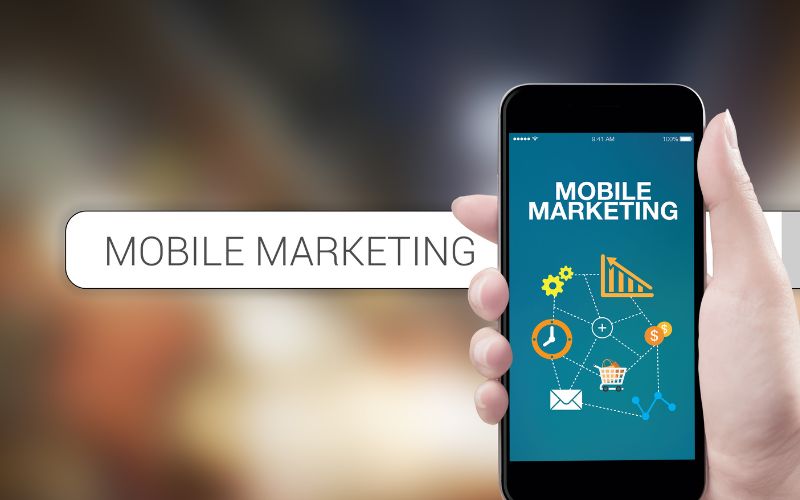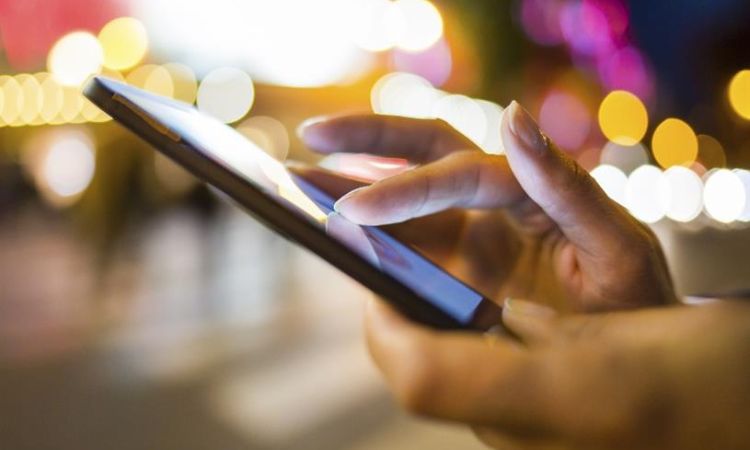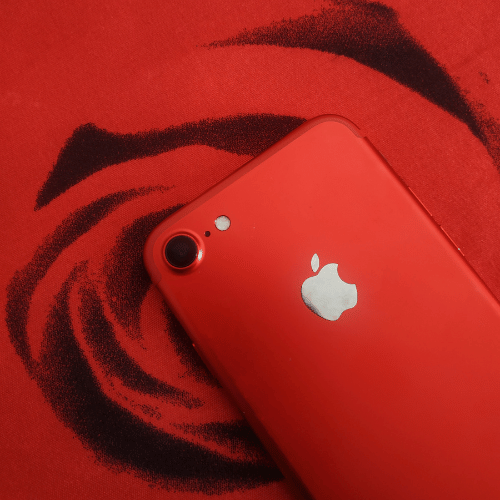In a world where mobile devices have become an extension of ourselves, it’s no surprise that mobile usage is skyrocketing. By 2025, the number of mobile users is expected to surpass a staggering 7 billion! According to the revered Global System for Mobile Communications Association (GSMA), 75% of mobile phone users will wield the power of smartphones by that time.
The reign of desktops is waning, with mobile seizing a commanding 60.29% market share as of December 2022, compared to a mere 37.71% for their clunky counterparts. With this mobile revolution in full swing, the mobile marketing industry is set to explode.

To thrive in this mobile-centric world, optimizing websites and apps for mobile is nothing short of essential. 63% of smartphone users prefer purchasing from companies that boast mobile-friendly websites or apps, according to the illuminating research from Think With Google. With an effective mobile marketing strategy, your brand can soar to new heights of awareness, effortlessly reaching your on-the-go target audience and maximising your reach in a cost-efficient manner.
In the world of mobile marketing, a smorgasbord of channels awaits savvy marketers. From SMS text messaging to MMA multimedia messaging, from in-app messaging to push notifications, and from mobile-responsive emails to in-game marketing, the possibilities are endless.A customer scanning a QR code with their mobile device, unlocking a world of immersive experiences and forging a lasting connection with your brand. These channels hold the key to acquiring and retaining customers, turning them into loyal brand advocates.

Consumer behaviour is the driving force behind mobile marketing. It’s all about understanding the pulse of your customers, their desires, and their whims. The mantra is simple: adapt and thrive.
Let’s explore five customer engagement trends that are poised to have a profound impact on marketing strategies in 2023.
Clairvoyant Chatbots: AI Unleashed:
These intelligent beings have honed their skills, accessing a wealth of customer data across the martech stack. Armed with this knowledge, they can predict customer behaviour, enhancing the overall experience. They’re evolving, incorporating voice interactions and traversing multiple touchpoints, becoming true omnichannel powerhouses.
Metaverse Gets Real: Blurring Boundaries:
Enter the Metaverse, a fusion of augmented reality (AR), virtual reality (VR), and AI. Imagine customers immersed in a 3D wonderland where reality intertwines with fantasy. It’s an opportunity for marketers to craft personalised experiences that captivate and inspire action. From “gamevertising” to virtual product try-ons, from shopping via social media platforms to even banking in the metaverse, the possibilities are limitless. The future is here.
Hyper-personalization: The Ultimate Key:
Advanced AI and machine learning algorithms empower marketers to deliver tailor-made experiences that make customers feel like they’re the centre of the universe. It’s about understanding their preferences, timing communications just right, and engaging through their preferred channels.
Personalized Video Engagement: Lights, Camera, Action:
In a world captivated by video content, personalised video engagement steals the spotlight. With attention spans dwindling, short-form personalised video ads take center stage. They hold the power to mesmerise viewers and boost completion rates to a staggering 85%. From Facebook to TikTok to Instagram, video reigns supreme. Live streaming, combined with influencers and personalised content, creates a magnetic pull, enticing viewers to interact and make purchases.
First- and Zero-Party Data: The Crown Jewels of Marketing:
As concerns over data collection and privacy mount, marketers seek solace in the realm of first- and zero-party data. Bid farewell to third-party cookies as the winds of change blow across digital landscapes. Gathered from loyalty programs, buying intent, and other sources, zero-party data becomes the secret sauce for personalized recommendations and superior customer service. Meanwhile, first-party data collected through owned digital channels unlocks the gateway to hyper-personalized experiences, deepening customer relationships and forging lasting connections.
As we delve into the captivating realm of mobile marketing, these strategies intertwine to create a symphony of customer engagement.
Power of Personalization
Embrace the art of personalization by leveraging valuable first-party data. Dive deep into the geographical location, preferences, and purchase history of your target audience to craft bespoke communication that resonates with each individual. A movie streaming app analysing a user’s genre preferences and emotional state in real-time. Armed with this insight, the app creates a customized customer profile and delivers perfectly tailored messaging at every stage of the buyer’s journey. Salesforce reveals that 79% of customers willingly share personal information in exchange for contextualised engagement, unlocking a wealth of lead generation and customer retention opportunities.
SMS Marketing: The Instant Connection
With an impressive open rate of 98% and 90% of text messages read within three minutes, this channel ensures your message reaches your audience with maximum impact. Imagine sending a timely SMS when a user abandons their shopping cart or interacts with your website. SMS marketing seamlessly integrates into cross-channel campaigns, providing customers access to your brand through their preferred channel.
Push Notifications and In-App Messages: Captivate and Convert
The average engagement rate for these dynamic channels is 26% for medium-performing applications and 44% for high-performing ones. Compare this to the 17% open rate of generic email marketing, and the power of these targeted tools can be seen. By incorporating eye-catching visuals, such as images or video links, and cleverly linking them to email campaigns, we can effortlessly encourage users to engage with your brand across web and app platforms. With approximately 20% of app opens triggered by push notifications, integrating personalization can further boost open rates by up to 9%.
Location-Based Marketing: The Magic of Proximity
By setting up geofences using GPS tracking, you can send personalized offers to customers when they visit your store or are in close proximity. Imagine delighting a customer by providing a discount for an item they are eyeing on the shelf right before them, utilizing beacon technology for that added touch of proximity magic. This form of marketing truly shines when customers are physically present, initiating a seamless cross-channel marketing experience that sparks connection and engagement.
Collaboration with Influencers and Command Social Media
Align your products and services with influencers across various tiers (mega, micro, mid-tier, macro, and nano) to enhance brand awareness and drive customer acquisition. Research shows that women predominantly follow fashion, beauty, entertainment, and celebrity influencers, while men tend to gravitate towards gaming and tech influencers. Selecting the right influencer platform is equally crucial. For instance, Twitter may be the ideal influencer marketing platform for companies targeting adult males, as 68.5% of global Twitter users are male. Meanwhile, Instagram reigns supreme as the preferred platform for 70% of women seeking influential inspiration.
Mobile Loyalty Programs: Unlock the Power of Retention
Tempt your audience with enticing lifetime packages for mobile products and services, creating a sense of exclusivity and appreciation. Take inspiration from the iOS App Store, where consumers seamlessly integrate payments from their main Apple account across various channels. Tailored loyalty programs, special deals, awards, and dedicated apps crafted for mobile customers can work wonders in boosting mobile engagement and forging long-lasting connections.

In conclusion, the world of mobile marketing is evolving at a rapid pace, presenting exciting opportunities for brands to captivate and engage their customers. By embracing the power of personalization, leveraging SMS marketing, utilising push notifications and in-app messages, harnessing location-based marketing, collaborating with influencers, and implementing mobile loyalty programs, businesses can forge strong connections with their audience and drive meaningful interactions.
The trends of 2023 in mobile marketing are centered around understanding customer behaviour, adapting to their preferences, and delivering tailored experiences that resonate on a personal level. As the mobile landscape continues to expand and shape consumer behavior, staying ahead of the curve and embracing these trends will be crucial for brands looking to make an impact. By implementing these mobile marketing strategies, businesses can not only increase customer engagement but also drive sales, enhance brand loyalty, and ultimately thrive in the mobile-centric world of tomorrow














